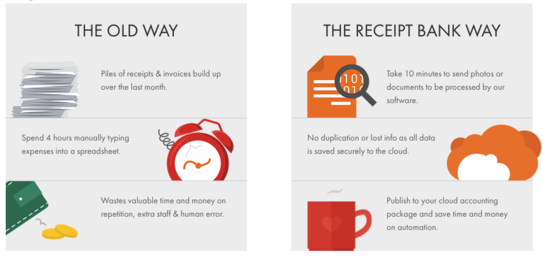Improving warehouse efficiency
As more and more businesses move into omni-channel distribution, the efficiency of ones inventory operation becomes relevant. But one may ask, when is a warehouse considered to be at capacity? The answer to this may vary, but typically a warehouse is at peak efficiency where space utilisation is at 80 - 85%. Breaching this threshold will see diminishing efficiency from a movement and space perspective. Pallet movement is restricted making each replenishment take more steps to complete, temporary storage of pallets on the floor will also inhibit efficiency. More steps to complete a move results in increased costs and slower processing, a business in this position will also have to expand to more locations quicker.
One of the first things to look at when assessing warehouse efficiency is by looking at each product on the shelves. In order to understand your specific situation, you need to assess the sell-through rate of each SKU sitting in inventory. This is the rate at which you sell through your entire inventory of a given SKU within a defined time period. Using this information, make an assessment on which products you may be overstocked on. With this in mind, here are some tips to make most efficient use of your warehouse.

Quantify the storage profile of your warehouse in terms of capacity and utilisation, look up and ensure you’re making best use of your vertical space. How many cubic meters of overhead space are not used? When discussing vertical space, make sure any changes you plan to make do not conflict with the fire safety installation of the building. While you’re on the subject of vertical space, identify functions where stacking heights are lower. It isn’t uncommon to observe empty upper rack space in areas of a warehouse where packing and dispatch take place. Another aspect of shelving that is often overlooked is depth, switch to double-depth racking to further increase efficiency.
If you are holding the same SKU across different bins or locations, try to consolidate these to increase space utilisation. Matching the size and sales of your different SKUs to an appropriate sized pick slot will also maximise the efficiency of your picking slots. If you find you’re overstocked on a couple of products, consider storing this inventory off-site to free up rack space for products with a high sell-through rate. Where possible, introducing drop-shipping for these products will further decrease your in-house inventory costs.

Another factor to consider is the width of your aisles, you don’t want these to be too wide as this will lower your overall space utilisation. By the same token you don’t want your aisles to be too narrow to the point where they inhibit picking equipment from operating effectively. Try to keep your inventory of packing materials relatively lean to retain space for other products. A good way to do this is by taking with your packaging supplier, aim to have them hold some inventory for you and simply take delivery every few days.
Managing the efficiency of your warehouse is made far simpler with specialist warehouse management software. At ALTSHIFT, we have worked with businesses of all shapes and sizes to introduce solutions to improve operations. Thinking of overhauling your inventory operation? Get in touch with us.
Maintaining lean inventory for distributors
In today’s economic climate, businesses are on a constant rolling diet. Owners and inventory controllers strive to pilot the leanest possible operation with next to no liabilities. Particularly in the Distribution scene, these companies are being run on extremely lean inventories - thus reducing the amount of capital tied up in inventory. Other companies will stock up in order to always have what the customer ordered.
There are pros and cons to both of these strategies, when a company chooses not to stock up they run the risk of losing an opportunity once a customer comes calling. By the same token, the distributor who stocks up on an item finds themselves in strife once they realise they’re not able to move the product quickly. The vital metric to any distribution business is sell-through rate. This metric is the number of times inventory of a product is bought and entirely sold in a given period. The more times a distributor can turn over it’s inventory in a year, the more money they will make. You can maximise your stock turns by avoiding stocking items that you cannot turn within 90 days.

The amount of inventory that you initially purchase is going to depend on where your customers are located and the quantity that they can reasonably demand. If your customers are in close proximity to your warehouse, then you can simply ask them how much product they plan to procure over a given period. On the other side of the coin, if your warehouse is servicing a far larger area of customers then you’ll need to have a buffer for any unexpected spikes in demand. Having good relationships with local suppliers comes in handy here as they can help you fill this demand within a reasonable timeframe.
One of the biggest errors a company can make is investing in too much inventory. If you aren’t able to move this product quickly, the inventory will be taking capital and shelf space inevitably costing the business cash-flow. The space taken by the slow-turning inventory could be better used stocking product that plays to what your customers want to buy. This comes back to the sell-through metric mentioned earlier, this metric is key to the success of any distribution business. The trick underneath it all is to hold just enough product to not run out of stock. Achieving this balance is key to your success as a distribution business.

Another factor to consider when deciding how much stock to purchase is the product life-cycle. Products like food and beverages are high-risk items which have a finite shelf-life, whereas gardening tools are relatively low-risk and can be kept on hand. Another trick of the trade is to sell your stock before you’ve even paid for it leveraging payment terms. If you only have to pay for the stock 30 days after it is sent, you could sell the stock and have the cash in hand before you settle the bill with the manufacturer. This way you’re essentially acting as a middle-layer, never “owning” the stock, but clipping the ticket along the way.
When it comes to managing lean inventory, this task is impossible to do at scale without a high level of visibility into your purchasing, sales and inventory operations. The implementation of a specialised ERP platform will give you the power to monitor your sell-through rates and other metrics to enable you to make smarter purchasing decisions. If your current system isn’t quite up to scratch, Alt Shift can manage your ERP project from scoping to implementation and training. We can provide you the tools you need to take your business to the next level. Get in touch with us to book in a chat.
Tired of loose receipts and paper invoices?
Going fully paperless is a real possibility with Receipt Bank - the revolutionary tool that makes processing accounts payable and credit card expenses effortless.
Receipt Bank helps to save valuable hours by scanning information from receipts and invoices and publishing them as bills in Xero.
Easily submit all your receipts and invoices by taking a photo via the mobile app,or share your unique Receipt Bank email address with your suppliers and their invoices will flow straight into your Xero account.

TRY RECEIPT BANK FOR FREE
We think Receipt Bank is a 'no brainer' for any business wanting to be more efficient with their bookkeeping, so we're offering to setup Receipt Bank for your business FREE OF CHARGE.
Contact us now for this exclusive free offer.
Once setup with your Xero account we'll schedule a time to quickly run you through the system so you can trial it free for 14 days.
If you want to continue with Receipt Bank after the trial ends we'll simply add it to your monthly bill. Plans start at just $30/month, find out more about Receipt Bank pricing here.
Go forth and automate!
